.
Keikan Shrine 鶏冠神社 – Roppongi-toge 六本木峠 – Marukawa-toge 丸川峠
Distance: 15.3 km
Elevation change: 826 metres
Highest point: 1716 metres
Start: Ochiai bus stop
Finish: Daibosatsu-toge trailhead bus stop
Difficulty: ▅▅▅▅▅▅▅▅▅▅ ❸
Map: Yama to Kogen Chizu 山と高原地図 [No.26 大菩薩嶺 DAIBOSATSU-REI]
GPX TrackKML TrackGSI MAPPDF Topo Map
Mossy Mountain Trails of Mt. Kurokawa-Keikan
Among Yamanashi Prefecture’s top 100 mountains, two share the same kanji 鶏冠山. One is Tosaka-yama, which stands tall on the north side of Higashizawa Valley and is famous for its steep, rocky peaks and high technical difficulty. The other is Keikan-zan, located on the north side of Mt. Daibosatsu, which has almost no dangerous sections along its route. To distinguish between the two, Keikan-zan is often referred to as Mt. Kurokawa-Keikan, thanks to neighbouring Mt. Kurokawa. The area has a rich history (no pun intended) and was once home to the Kurokawa Gold Mine, which supported the Takeda clan during the Sengoku period.
On weekends and public holidays, there are two daily bus services from Enzan Station 塩山駅 to Ochiai 落合 (1 hour, 1,300 yen), the closest bus stop to the trailhead. The morning bus departs at 8:30 am from outside the south exit. For 2024, this bus service runs from April 20 to November 24. While this hike is commonly done as a round trip from Yanagisawa-toge 柳沢峠, a better approach is to start at Ochiai (the final bus stop) and finish at the Daibosatsu-toge trailhead bus stop. This route minimises backtracking and includes some lovely moss-enclosed trails.
The trailhead proper begins just a few minutes’ walk back up the road from the Ochiai bus stop and is clearly signposted. The trail starts gently, enclosed on both sides by deer-proof fencing. In early November, the autumn leaves in this area should be at their peak. After about 45 minutes, you’ll arrive at a four-way junction, where a traverse begins along a lovely path lined with moss-covered rocks. After reaching the ridgeline, it’s another 10 minutes to the summit of Mt. Keikan 黒川鶏冠山 (1,716 m), which requires some climbing up some tree roots and minor rock scrambling. At the narrow summit, there’s a small shrine with views of the pyramid-shaped Mt. Daibosatsurei, along with Mt. Hiryu, Mt. Kumotori, and Fuji-san.
After returning to the signpost on the ridgeline, turn left and take a short detour to the lookout point 見晴台. Nearby stands the modest Mt. Kurokawa 黒川山 (1,710 m), marked by a trig point. From here, you can see the entirety of the Okuchichibu Mountains, including Mt. Kinpu, Mt. Kasatori, and Mt. Karamatsuo. After taking in the fine view, continue towards Yanagisawa-toge 柳沢峠. The trail, carpeted in dead leaves, has almost no elevation change, making it an easy walk. About halfway, you’ll reach the Sensui Yokoteyama Forest Road 泉水横手山林道, where the trail continues directly across. At Roppongi-toge 六本木峠, head towards Daibosatsu-rei 大菩薩嶺.
Moss gardens appear again along the route, with many such areas dotting the trail. Although there are no views, the trail has almost no ups and downs, making it an easy and pleasant walk. Along the way, you’ll see signposts at the minor passes of Tenniwa-toge 天庭峠 and Terao-toge 寺尾峠. After about an hour’s walk from Roppongi-toge, you’ll emerge from the forest at an open area with a great view at Marukawa-toge 丸川峠, home to the ramshackle-looking Marukawa-so Hut 丸川荘. It’s a great spot to take a breather before the last push.
The final stretch of trail descends steeply to Reishi 開始 and the Daibosatsu-toge trailhead bus stop 大菩薩峠登山口. In contrast to the day’s enjoyable and well-maintained trails, this section is considerably tougher, with loose gravelly soil and dead leaves concealing all manner of tripping hazards. After reaching the rough forest road, follow it downhill until you arrive at a paved road. From there, it’s a 15-minute walk to the bus stop for the ride back to Enzan Station (15 minutes, 300 yen). If you have time before the bus departs, consider a relaxing soak at the Daibosatsu-toge-no-yu 大菩薩峠の湯 onsen (620 yen).
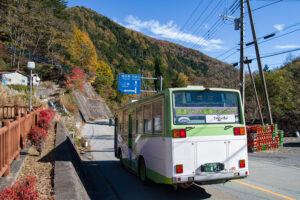
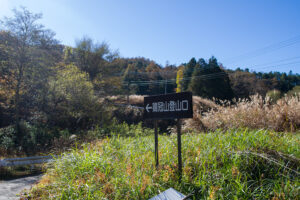
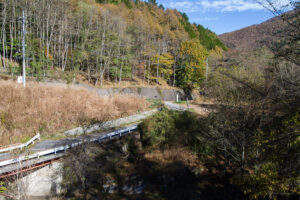
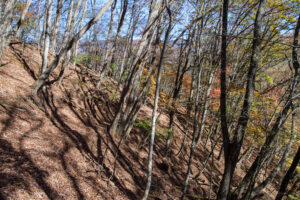
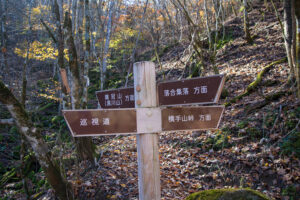
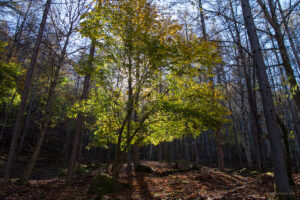
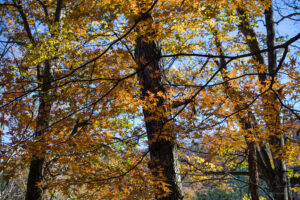
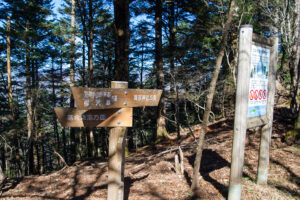
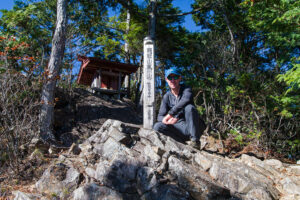
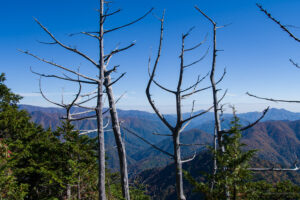
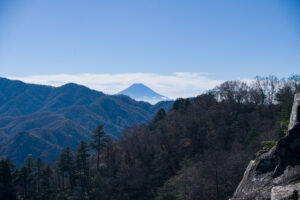
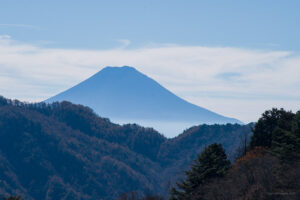
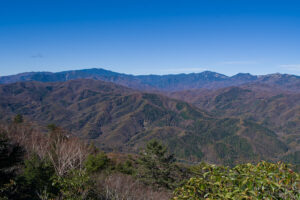
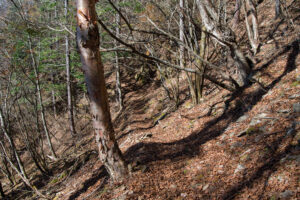
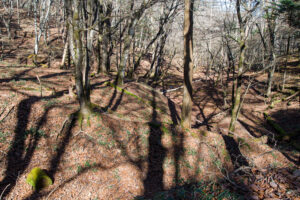
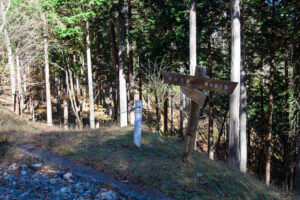

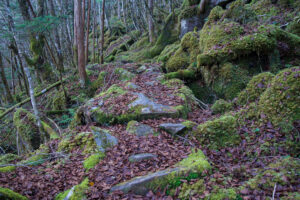
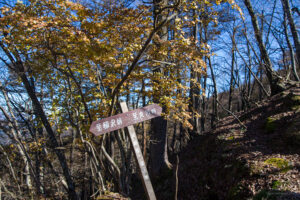
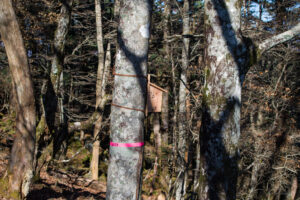
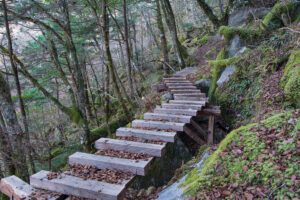
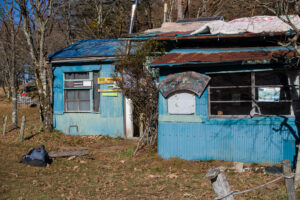
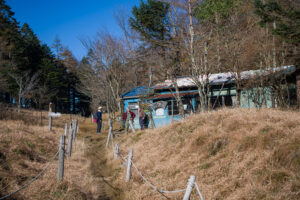
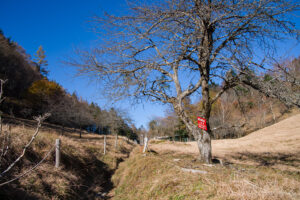
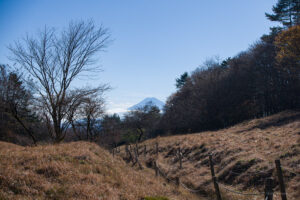
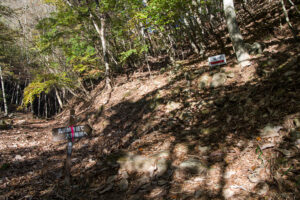
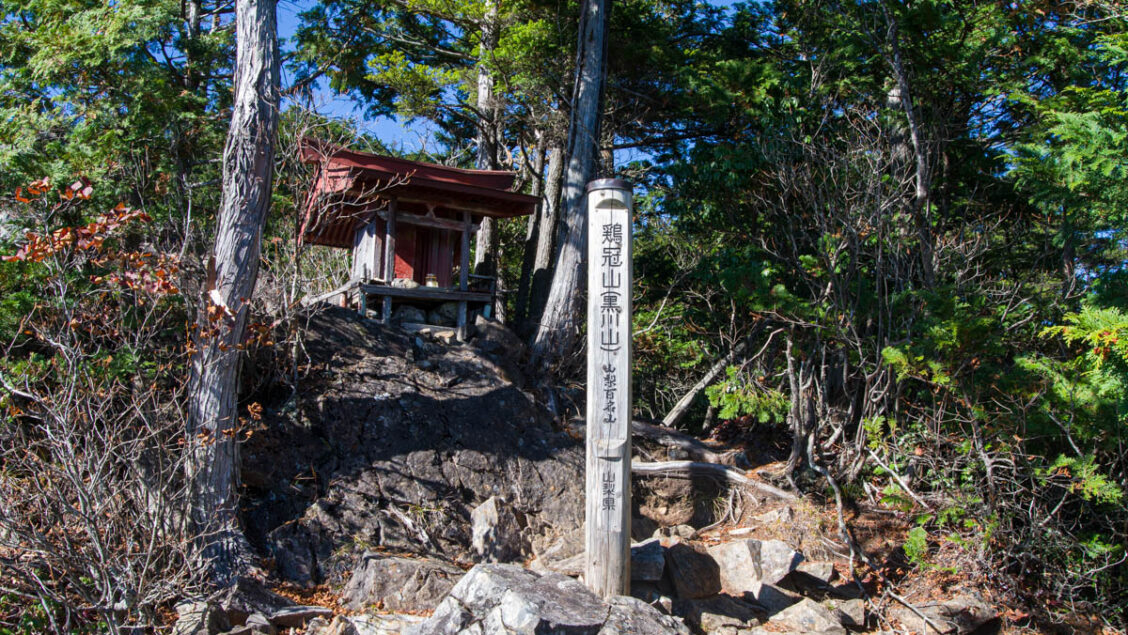





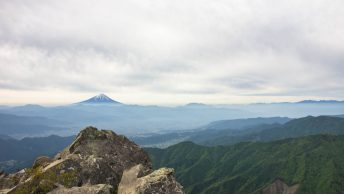
You’re going to some of my favorite places these days! Isn’t that a nice area?
It takes some effort to get out there, but it’s totally worth it. I noticed on your blog that you did the hike from the Tabayama Village side. I thought about that option too, but from what I gathered, the traverse after the waterfalls is a bit of a doozy.
You’re not kidding it takes effort to get there. I think I’ve taken my scooter to that area–no kidding–probably 10 or 15 times. It took about 3 hours each way.
It is a fun area, isn’t it? I liked the picture you took of that little shrine on Keikan. As I recall, the boulders on the way made me a bit dizzy.
You really got me going down memory lane with this hike. I’ve been going over my old gpx footprints in the area because most of my hikes out there were before I started blogging and I realized I hadn’t logged the information anywhere. Your using the trailhead near the Ochia Bus Stop reminded me that I had been that way before but hadn’t put it on google earth. I hunted for the GPX on YAMAP. That led me to realize there were other hikes in the area I’d never logged anywhere. Finding that old information reminded me of some great hikes. The hills west of Yanagisawa Pass have some spectacular views. The ridge next to Yanagisawa Pass has an *old* rusty pickup truck that reminds me of the station wagon on Fuji. Obviously, there must have been something commercial going on there in the past. Once I went over the Shirasawa Pass to the road leading to Nishizawa Keikoku from Ochia. I am pretty obsessed with hiking every trail on the map, so I really did invest some time and shoe leather into that area. Anyways, thanks for the memories. I should pretend I am working now. 😉
Fascinating, particularly about the gold mining. One hears a lot (maybe too much) about discovering the “real Japan”. But here you have discovered the real Roppongi … : )
Unfortunately, the old hiking trail that once looped around the old mine is now cordoned off. That said, this ‘Roppongi Hills’ is by far the best!